Homemade Lechon Paksiw Sauce
The days — maybe even weeks — that follow a wonderful and festive holiday are absolutely filled with leftovers. No matter how many loved ones come and celebrate with you, whether it’s during Christmas or ringing in the new year, it’s inevitable to find yourself left with heaping portions of leftover food still waiting to…
This post may contain affiliate links. Please read our disclosure policy.
The days — maybe even weeks — that follow a wonderful and festive holiday are absolutely filled with leftovers. No matter how many loved ones come and celebrate with you, whether it’s during Christmas or ringing in the new year, it’s inevitable to find yourself left with heaping portions of leftover food still waiting to be devoured. One can’t complain much about this; holiday food, after all, is some of the most indulgent and delicious! But for those looking to put a spin on your regular leftovers, you need not look any further. Lechon paksiw is one way to turn a classic holiday meal into something else entirely, but equally delicious. And what’s a lechon paksiw without its delicious sauce?
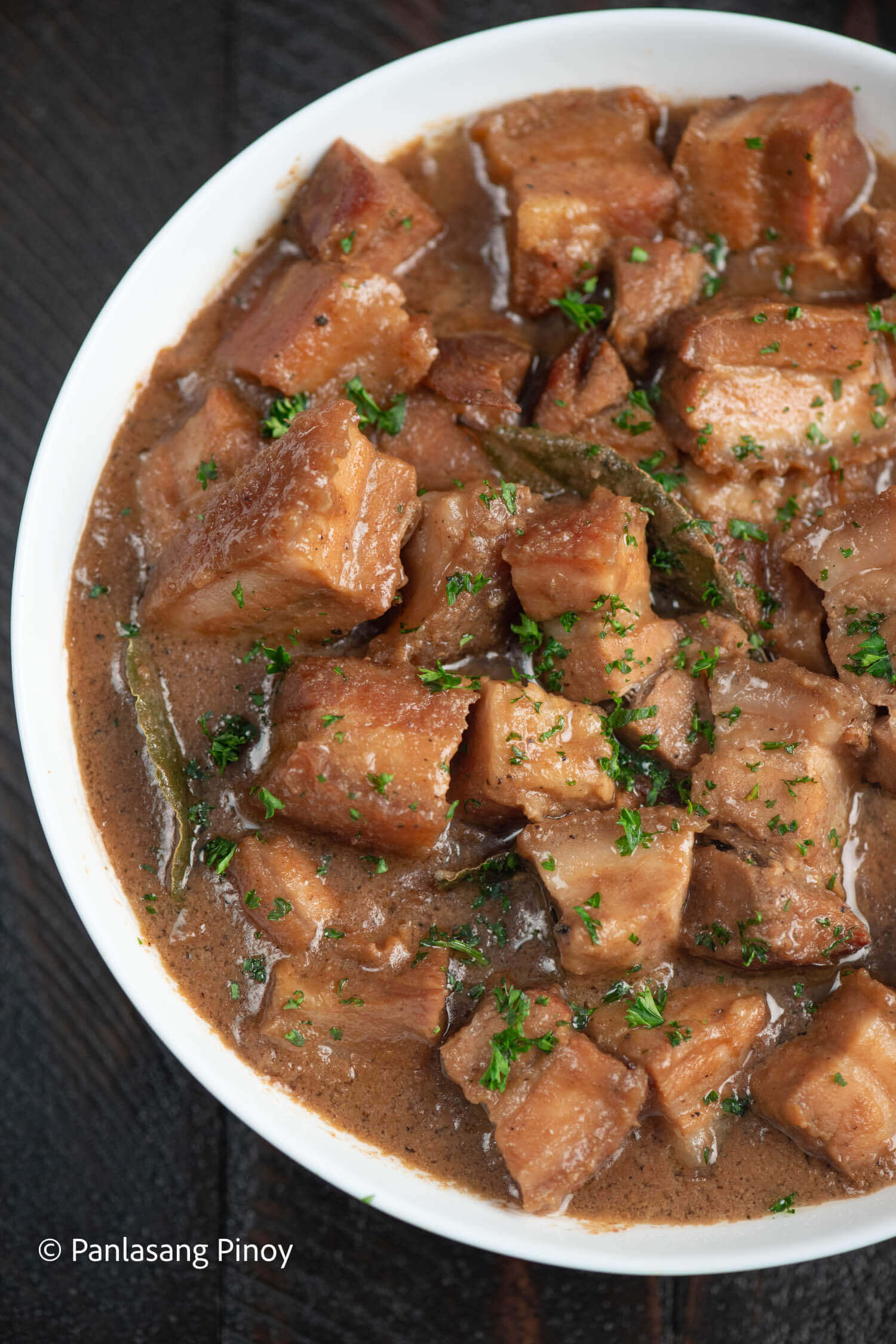
It’s safe to say that many Filipino celebrations aren’t complete without lechon. Feasts, festivals, and family gatherings are no stranger to the image of a whole pig, spit-roasted to perfection. Brown and beautiful, lechon is one of the most anticipated meals at any party. But depending on where you’re from, the way you prepare this dish may be quite different! If you’re from Visayas, where the popular Cebu lechon hails from, you’ll know that cooks there stuff their lechon with all sorts of herbs. The marriage of herbs like scallions, bay leaves, and lemongrass makes this Cebu lechon all the more delicious. Infusing all these flavors into every bite makes it complex enough that you’ll keep wanting more. Meanwhile, Luzon lechon consists only of the regular salt and pepper spices. However, its main distinction from Cebu lechon lies in its tantalizingly savory lechon sauce.
However — and wherever — you enjoy your lechon, it’s safe to say that afterwards there’s usually a lot of it still ready to go around. This is where lechon paksiw comes in. Brimming with its own uniquely intense flavors, you could recognize lechon paksiw from its aroma alone. The scent that wafts from a bowl of lechon paksiw is as deliciously complex as the sauce that coats it. Lechon paksiw takes all the lechon you leave over, and turns it into something truly, delightfully different.
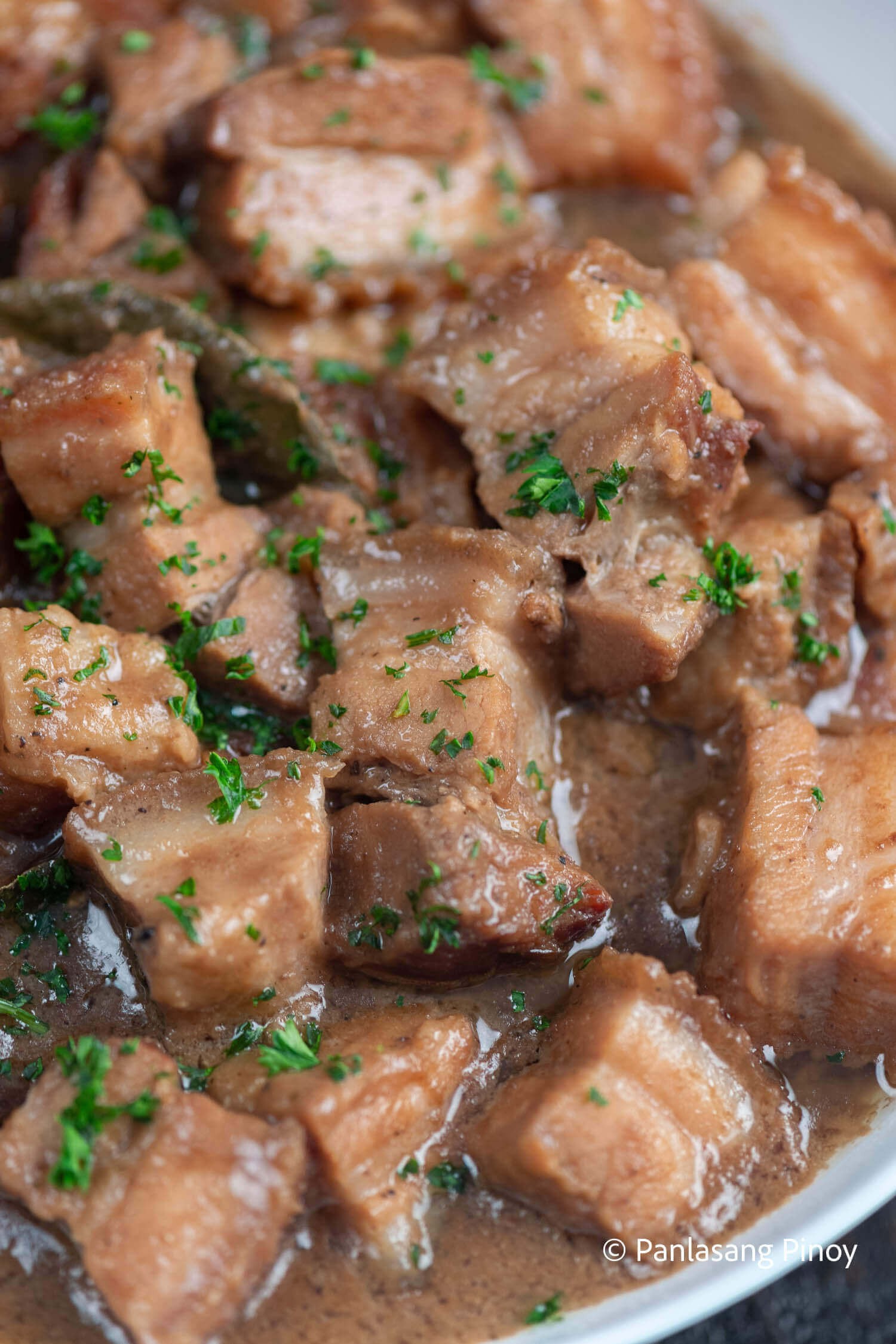
What is paksiw?
Another example of Filipinos’ innovation in the kitchen, paksiw is a native cooking method that involves cooking and simmering meat in vinegar. An assortment of spices accompany vinegar in flavoring and marinating the dish, though this is highly dependent on what dish you’re making. Lechon paksiw, as it turns out, is only one of the many dishes that use the paksiw cooking method. Even meals like paksiw na isda, as well as chicken paksiw, are some other Filipino favorites.
Cooking with vinegar isn’t exactly a novel concept in Filipino cuisine. Lechon paksiw — and paksiw in general — isn’t the only dish where vinegar makes an appearance. Our work with vinegar when preparing food dates back centuries — even in pre-colonial times! This is where cooking methods like kinilaw first appeared. Also referred to as Philippine ceviche, our cooking and marinating of fish in vinegar and other spices helps in keeping it fresh longer. Not only that, but doesn’t it just taste so good?
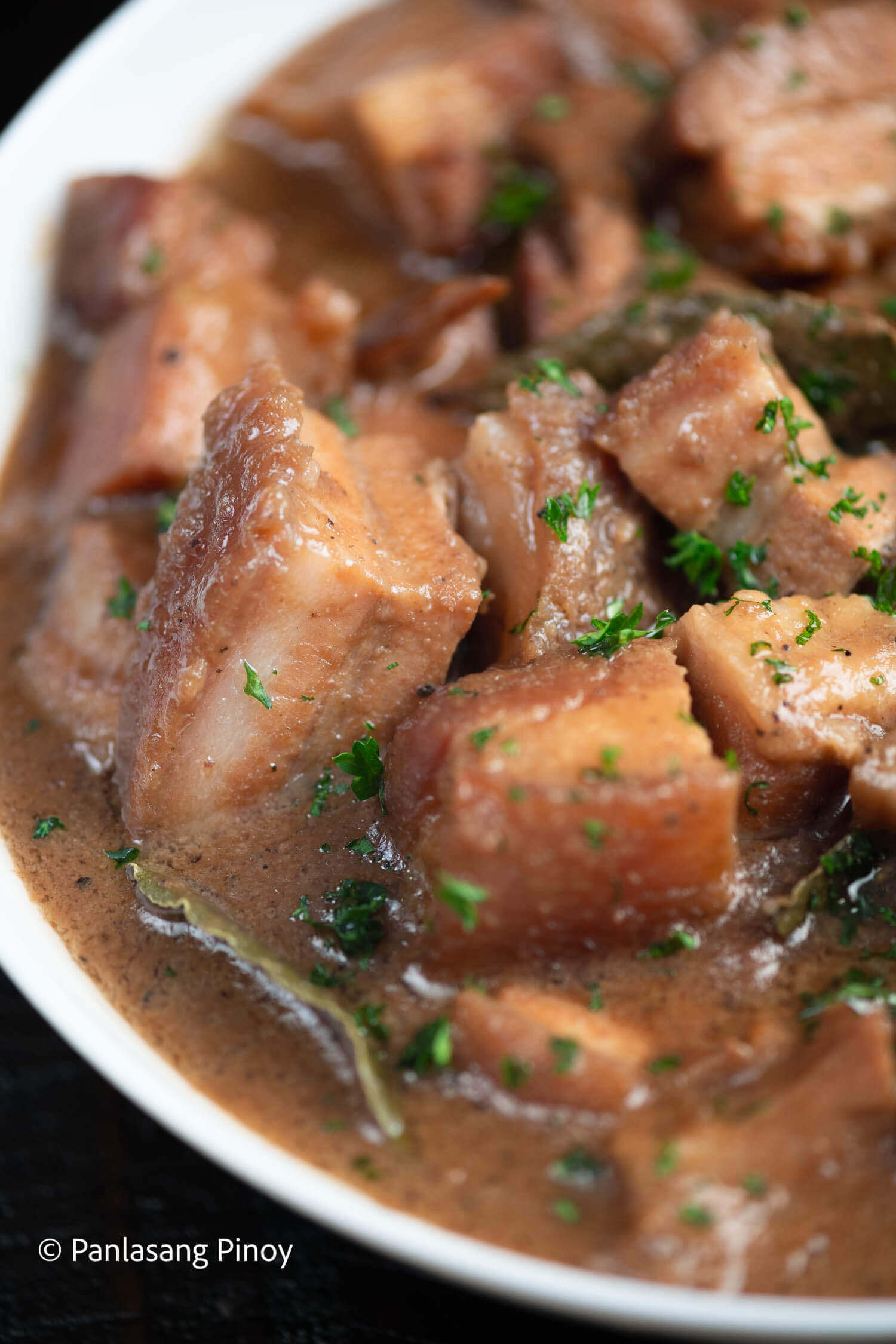
Another popular way we cook with vinegar — one I’m sure you’re definitely aware of — is in our adobo. A humble mix of soy sauce, vinegar, bay leaves and garlic make up the strong contender for national dish. Umami and savory, just like our lechon paksiw, adobo is timelessly tasty, and a mainstay in any kitchen. And just like our lechon paksiw, enjoying this dish with several cups of rice is a must!
With the different ways you can utilize vinegar in your cooking, it’s no surprise dishes like lechon paksiw have gained such popularity around the country. Frankly, the only transformational element in this dish is the lechon paksiw sauce itself. Savory and satisfying, several ingredients come together to make your lechon paksiw sauce. This harmony of elements really brings a certain sweet yet tangy taste to your tender meat. Your lechon paksiw’s sauce will definitely breathe in a new kind of life to a holiday leftover you had already enjoyed prior.
But what else is in this lechon paksiw?
There are a few ingredients you’ll need to prepare for this homemade lechon paksiw sauce. 5 ounces of pork liver need to be sliced, after which you’ll need to chop up one onion. Crush a head of garlic as well, and prepare the rest of your ingredients. Soy sauce, vinegar, bread crumbs, sugar, and ground black pepper will add to the many different layers of flavor in your lechon paksiw sauce. Lastly, one Knorr Pork Cube deepens it all the more. With all your ingredients ready, making this lechon paksiw sauce should be a breeze.
To begin, heat 3 tablespoons of oil in a pan before adding in your pork liver. From here, fry your liver until it browns, then remove it from the pot and place it inside a blender. Add 2 ½ cups of water then puree your mixture before setting it aside. With the remaining oil in the pan, sauté garlic and onion pieces until your onions soften considerably. After, you can pour in the liver puree and bring this mixture to a boil.
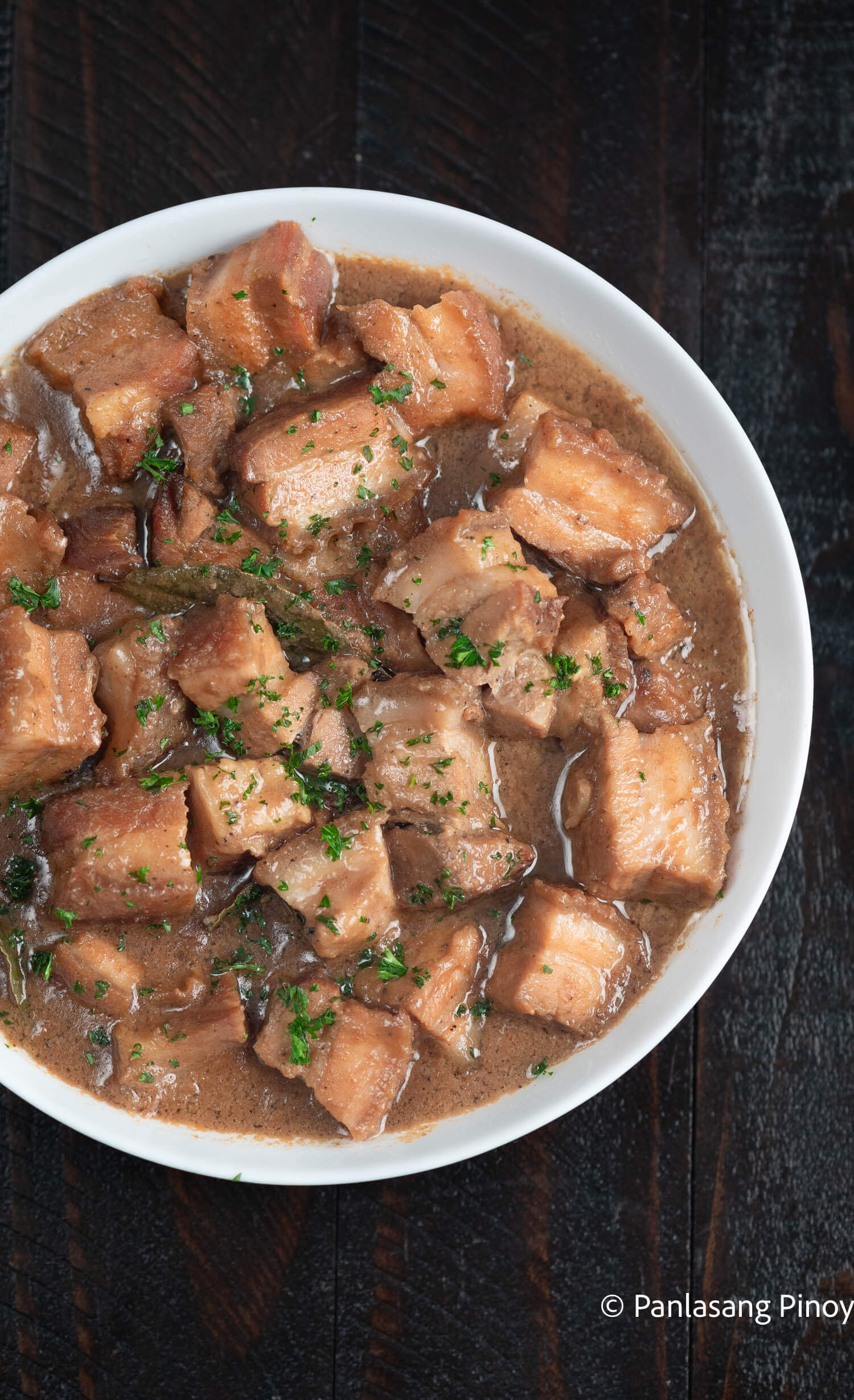
The next step in your lechon paksiw sauce is to add in some of your other ingredients. Your Knorr Pork Cube, soy sauce, vinegar, and ground black pepper go into your sauce mixture next. Let your lechon paksiw sauce boil, before adding in your brown sugar and breadcrumbs. Then, turn the heat off and very carefully pour your mix into a blender. For one minute, puree your lechon paksiw sauce once again before pouring it back inside the cooking pot.
Bring your sauce to a boil before adding your laurel leaves and lechon leftovers. About 2 ½ pounds of the latter will do for this recipe, in order for you to enjoy a filling and hearty meal. By now, the enticing aroma of lechon paksiw should fill the air—doesn’t that just make your mouth water? Cover the pan, and continue cooking your dish for about 40 minutes. Keep your heat down low as you allow your lechon to soak in all the delicious and delightful flavors your lechon paksiw has to offer.
Season your dish with salt to taste, and once you’re satisfied turn off the heat and transfer your dish to a serving bowl. Your lechon paksiw is ready to enjoy with your loved ones, as well as as many cups of rice as you need! (Trust us; you’ll need plenty.)
Did you enjoy this homemade lechon paksiw sauce? As always, we’d love to hear from you; leave some comments below.
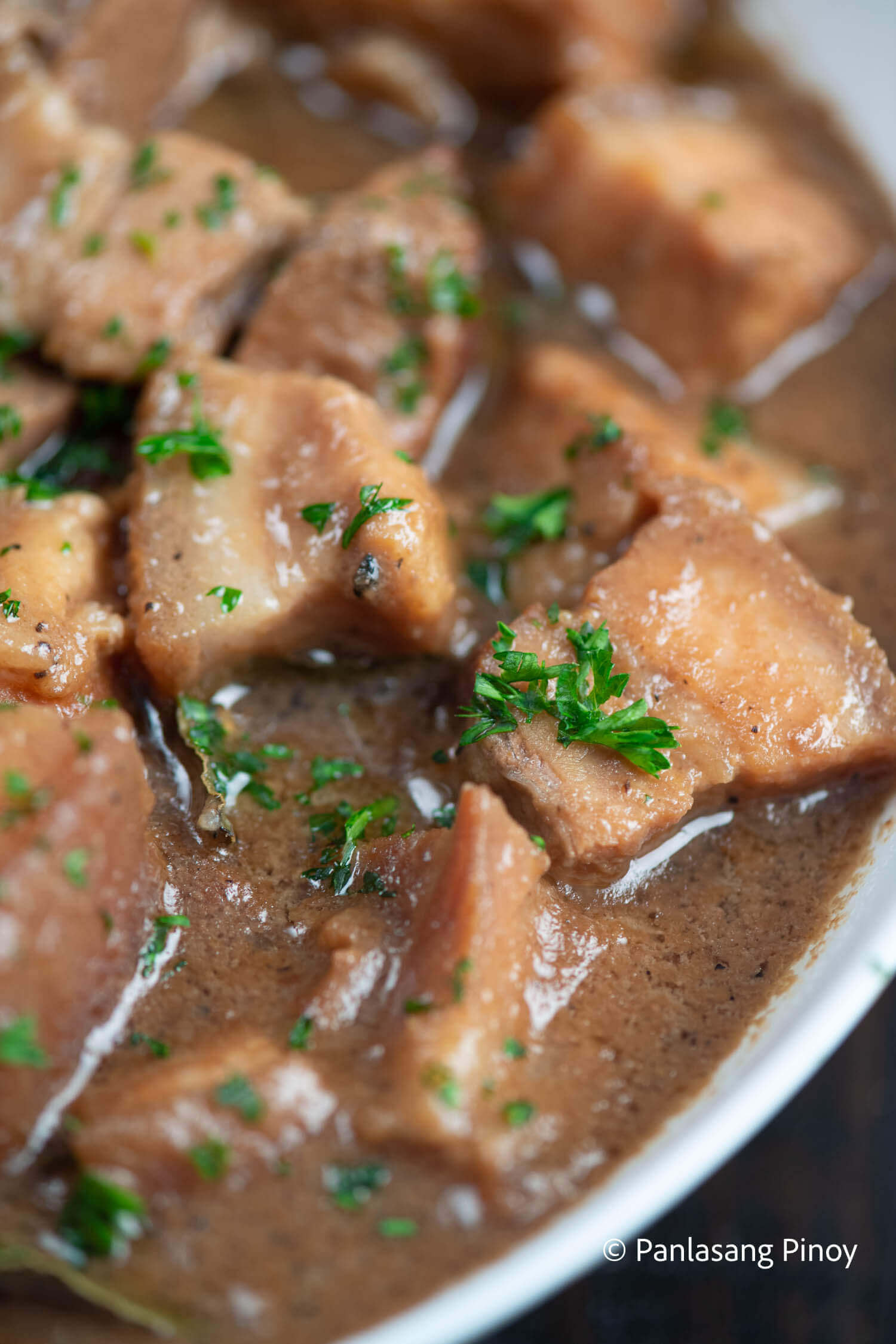
Did you make this? If you snap a photo, please be sure tag us on Instagram at @panlasangpinoy or hashtag #panlasangpinoy so we can see your creations!
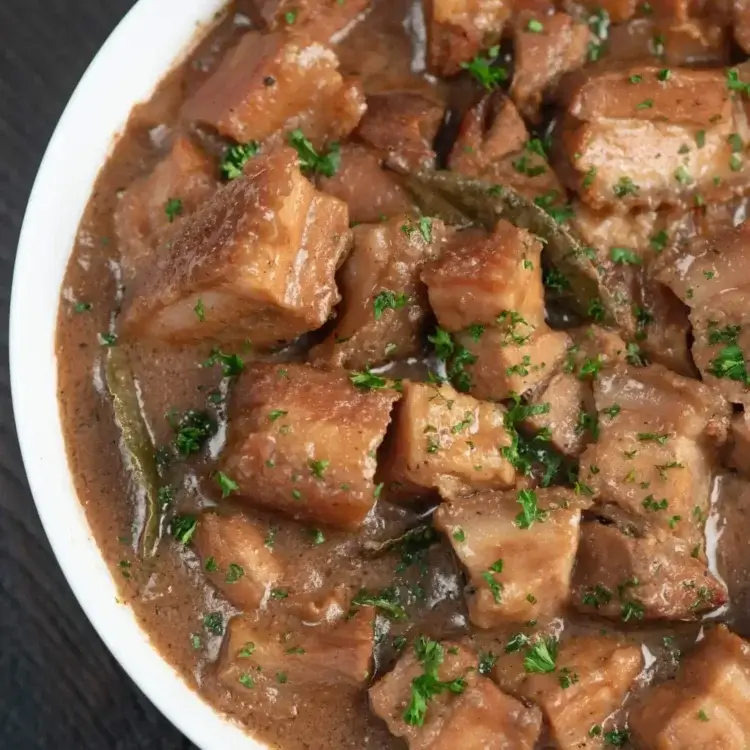
Homemade Lechon Paksiw
Instructions
- Heat oil in a pan. Add the pork liver. Fry until color turns brown.
- Remove the liver from the pot and place inside the blender. Add water. Puree the mixture. Set aside.
- Using the remaining oil, sauté garlic and onion until the latter softens.
- Pour the liver puree. Let boil.
- Add Knorr Pork Cube, soy sauce, vinegar, and ground black pepper. Let the mixture boil. Stir.
- Add brown sugar and breadcrumbs. Turn the heat off and pour the entire mixture back into the blender. Puree for 1 minute.
- Pour the puree back into the cooking pot. Let it boil.
- Add laurel leaves and roasted pork. Cover the pan. Continue cooking in a low heat setting for 40 minutes.
- Season with salt as needed.
- Transfer to a serving bowl. Serve warm. Share and enjoy with rice.
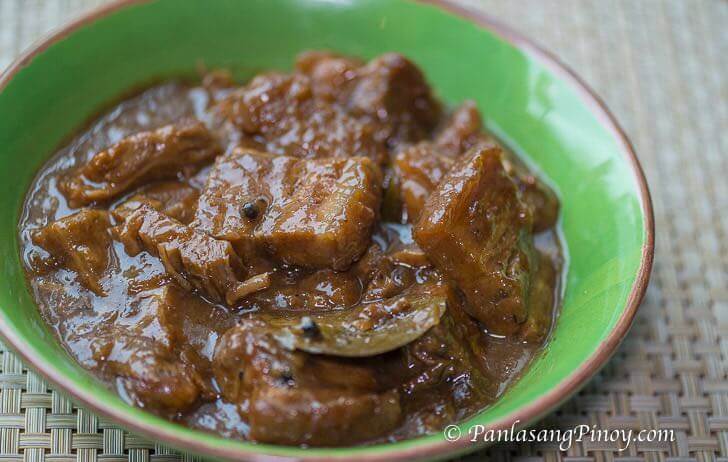
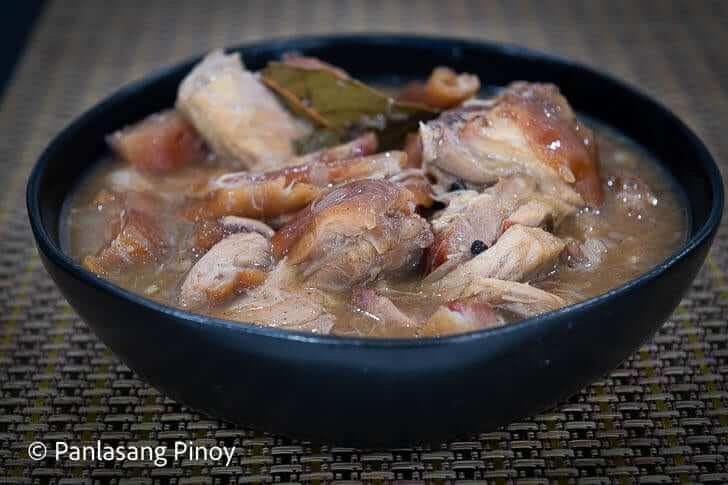
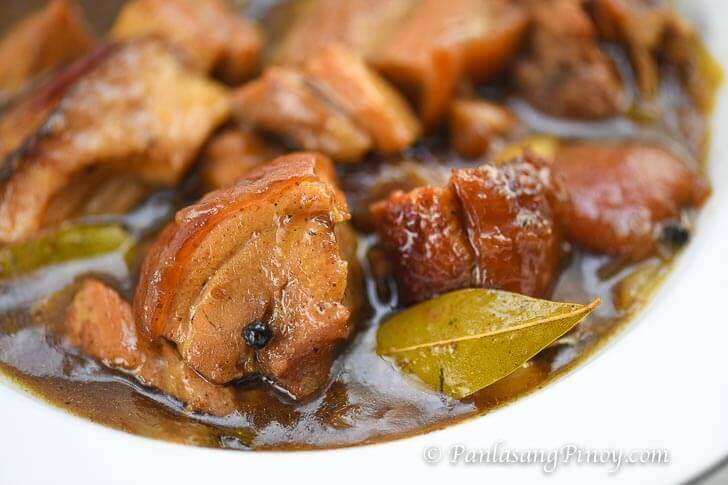
Leave a Comment